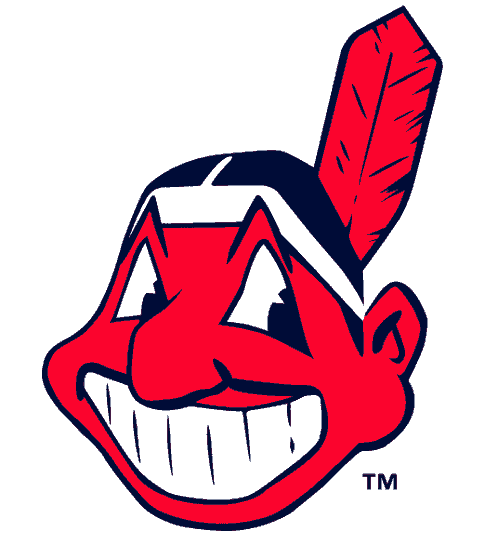| CARL CRAWFORD |
JAYSON WERTH |
| Age: 29 |
Age: 31 |
| Position: LF |
Position: RF |
| Height: 6-2 |
Height: 6-5 |
| Weight: 215 |
Weight: 220 |
| Bats/Throws: L/L |
Bats/Throws: R/R |
| MLB Service: 1,235 games |
MLB Service: 775 games |
| BA/OBP/SLG: .296/.337/.444 |
BA/OBP/SLG: .272/.367/.481 |
The Yankees were in Arkansas yesterday visiting Cliff Lee, but that doesn’t mean they’re blind to other free agents who could help the ball club. As recently as a week ago, it was reported in numerous outlets that the Yankees were not planning to pursue corner outfielders Carl Crawford and Jayson Werth.
Enter the latest developments: we know that per Jon Heyman at SI.com, that the Yankees have called Crawford, who is reportedly the Angels’ top target. Torii Hunter has already begun stumping for the speedy left fielder. “We need Carl Crawford,” Hunter told the LA Times. “Put it like that.” In that same article, Hunter predicted the finalists in the Crawford Sweepstakes would be the Angels and Red Sox.
To date, the Yankees have not contacted Scott Boras regarding Werth. That’s not to say they aren’t interested, however, according to Frank Russo at NYBD.
“It would be foolish to count the Yankees out on a bat after their stealth singing of Mark Teixeira two years ago,” Russo writes.
Discussions regarding all three players should heat up during the GM Meetings next Wednesday and Thursday in Orlando. If no progress is made by then, there is always the Winter Meetings, which start December 6.

With all that in mind, if the Yankees end up demonstrating interest in both Crawford and Werth, and ultimately land one of them, which one should it be? Who is the better fit for the pinstripes? I e-mailed some members of our network of trusted bloggers and newspaper scribes to get their thoughts. With the exception of Jay Jaffe, whose commentary was excerpted from a recent post at Pinstriped Bible, their e-mail responses are listed below.
Sincere thanks to the respondents for participating.
Anthony McCarron — NY Daily News:
Crawford might be a better player, but Werth would be a better fit only because the Yanks can probably get him on a shorter contract. If the speculation is right and Crawford will get $100 million, that’s just too much money and probably too long a contract for a guy whose best skill, speed, likely will be regressing in the twilight years of the deal. He’s not worth $100 million to a team that already has a dynamite speed guy in (Brett) Gardner.
As for Werth, if the Yanks got him on Jason Bay’s deal or even a little more (4 years, $66 million, with a $14 million option for 2014), I think he’d be a good buy. But only if the Yanks are convinced he’d be happy in New York.
Jonah Keri, uber-writer:
Crawford is the better player – better D, better stealing/running, younger and more likely to age well over the next 5+ years.
Fit isn’t all that important when one player is clearly better than another.
Jay Jaffe, in the aforementioned post at the Pinstriped Bible, warns of luxury tax implications steeper than paying $200 or 10 percent of your assets:
While it might seem natural to link the Yankees to just about any player with a big sticker price — it’s what those players’ agents lie awake every summer night dreaming of, not to mention an obvious talking point for any pundit — they’re simply not fits for the combination of the Yankees’ current needs and budget. And while the Yankees spend far more than any other team on payroll, they most certainly do have a budget. …
… Hal Steinbrenner’s stated desire is to keep the Yankee payroll at “the same level” as recent years. Loosely translated, that means an opening day payroll somewhere just north of $200 million. The Yankees have been above that mark four times in the past six years. They’ve been above $205 million in three of those years, including 2010 ($206.3 million). But they’ve never been above $210 million, topping out at $209.1 million in 2008. Similarly, while they’ve shown a willingness to add payroll in-season via trades, their year-end payrolls — which tally the incentive bonuses, buyouts and other benefits they actually paid over the course of the season, as well as the base salaries — have never topped $225 million. We don’t have those figures for 2010 yet; the commissioner’s office generally releases those figures right around Christmas time, but from 2007 through 2009 they ranged from $218 to $222 million, again a very narrow band.
Accounting for the salaries coming off the books and the raises due the remaining players via contract clauses and arbitration, my calculations quickly took the Yankees to $159 million committed to 19 roster spots, which would appear to leave not much more than $50 million available to re-sign Derek Jeter, Mariano Rivera, Andy Pettitte and whomever they go after on the free agent market — not only Cliff Lee, their number one target, but also any significant bench players to fill the slots vacated by Marcus Thames and Austin Kearns, to say nothing of the sizable hole in the bullpen left by Kerry Wood’s departure. Considering that Jeter, Rivera and Pettitte made nearly $50 million alone in 2010, it’s apparent that the Yankees can’t simply pile another $20-25 million on without heading for a $230 million opening day payroll and a $250 million year-end tally. Remember too that for every extra $1 million the Yankees add to the pile above a certain threshold — $170 million in 2010, $178 million in 2011 — they pay a 40 percent luxury tax.
Another vote for “neither,” from Ben Kabak of River Ave. Blues:
Don’t see it from a money or marginal win upgrade perspective. Depends on returns, but I highly doubt either end up in pinstripes.
The ever astute and cerebral Larry Koestler, of Yankeeist, throws a bone to the Werewolf:
If the Yankees were to look into acquiring one of the two, they’d likely have to move one of their current outfielders first. Each of Curtis Granderson, Brett Gardner and Nick Swisher — the latter two of whom put up career years, while the former didn’t quite meet some lofty pre-season expectations — have been mentioned in various circles as potential trade bait, but given that each is (relatively) affordable and produced at a 3.0-plus fWAR level in 2010, it’s difficult to make a serious case that any of them should be traded.
On the surface Crawford might seem like the more appealing option, given that he’s two years younger than Werth, fast and a great fielder, but if it were up to me I think I’d probably pursue Werth, who theoretically should command a slightly lesser deal in both years and overall dollars and is going to provide more bang for your buck.
Crawford had a career year in 2010, posting a .378 wOBA along with an eye-popping 6.9 fWAR for a season worth $27.4 million according to Fangraphs. However, Werth wasn’t exactly a slouch himself, with a .397 wOBA (good for 5th-best in the National League) and 5.0 fWAR, worth $20 million.
For 2011 Bill James has Crawford projected for a fairly significant regression, with a triple slash of .300/.350/.453, and a .357 wOBA. Those are solid if unspectacular numbers, and probably not worth the $20M/year Crawford is likely looking for.
Bill James has Werth projected to a .275/.375/.493 and .380 wOBA line in 2011. No Yankee outfielder put up a wOBA that high in 2010, and the highest wOBA the trio is projected to produce per James is Nick Swisher’s .362.
Crawford’s clearly superior to Werth (and almost everyone in baseball) defensively, but given the various shortcomings of the assorted advanced defensive metrics we have at our disposal, I’m not sure how wide the gulf truly is. Anecdotally I’m pretty sure I’ve never heard anyone say Werth was a particularly lousy defender, so I wouldn’t get too caught up on defense.
So while I’m sure there’s a case to be made for locking Crawford up long-term, my preference for a hitter boasting patience and power — two of the rare baseball skills that can improve with age, unlike speed — makes Werth the easy choice.
My former colleague, MLB.com’s Jon Lane:
I love both players, but based on statistics, my “eye test” and overall feel, Carl Crawford is both the better player and fit for the Yankees.
Werth obviously has the edge in power numbers, has blossomed into a star the past two years and would fit nicely in the middle of anyone’s batting order, but that’s where it ends. Crawford is two years younger and gives you a good bat with speed that bolsters his offensive numbers, and the better range in the outfield. Crawford is a four-time MLB leader in steals and triples. The Yankees aren’t getting younger and there still tends to be such an over-reliance on power, which could explain their frequent undoing with runners in scoring position. As much as I like Brett Gardner, Crawford’s gotten it done in all categories in a longer time frame and will continue to get it done.
Another thing to factor in is if the Yankees will actually bite the bullet and move Derek Jeter down in the order. Crawford hitting in the No. 2 spot would go a long way in solving that problem.
As far as Crawford’s defense, he’s been in the top three in putouts from left field every season since 2005. Ditto his range factor since 2003. In the same category he leads all active players and is sixth all-time (Source: Baseball-Reference.com).
I’d take an outfield of Crawford, Granderson/Gardner and Gardner/Swisher/Crawford any day. Both players can play multiple positions, but like Joe Girardi I’m more comfortable moving Gardner around the outfield on given days.
If you’re scoring at home, that’s 2 for Crawford, 1 for Werth, and two for “none of the above.”

What’s your take?










































